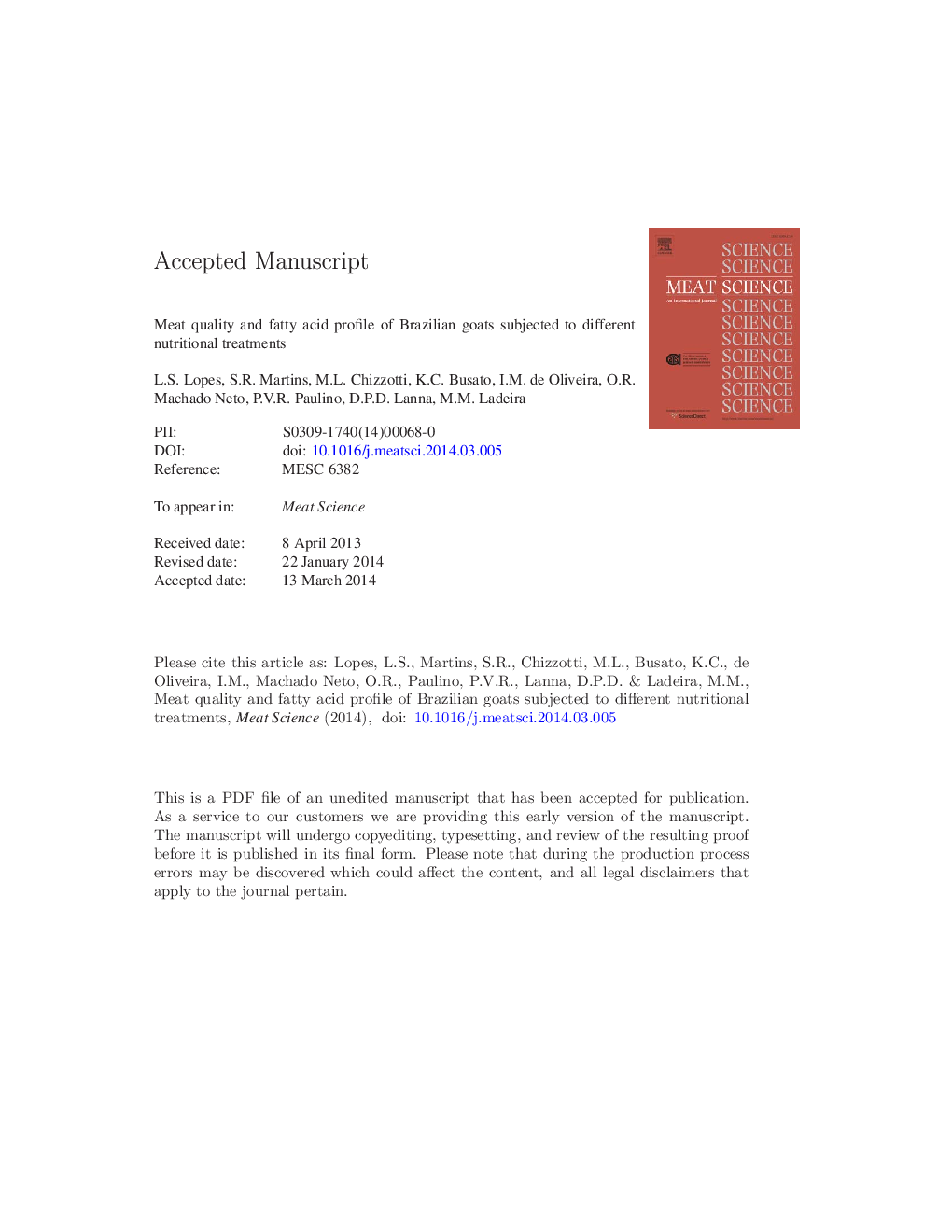| Article ID | Journal | Published Year | Pages | File Type |
|---|---|---|---|---|
| 5791668 | Meat Science | 2014 | 32 Pages |
Abstract
This study evaluated the effect of feed restriction and goat genotype on meat quality. Three genotypes (Brazilian native breed Canindé; Brazilian native breed Moxotó; and F1 Boer crossbred animals obtained by crossing Boer bucks with local breed does) and three different feeding regimens (ad libitum fed, AL; restricted fed at 75% of the ad libitum, R.75; or restricted fed at 50% of the average ad libitum intake, R.50) were used. There was no difference (PÂ >Â 0.05) in chemical composition, total and soluble collagen, and shear force of the Longissimus lumborum muscle among genotypes. However, AL had greater amounts of soluble collagen and crude protein in the muscle (PÂ <Â 0.05) than R.75. No difference (PÂ >Â 0.05) was observed for the myofibrillar fragmentation index. The goat genotype presented few differences in their fatty acid profiles. However, goats fed ad libitum had a more favorable fatty acid profile for human health with greater concentrations of oleic acid, unsaturated fatty acids, and conjugated linoleic acid.
Keywords
Related Topics
Life Sciences
Agricultural and Biological Sciences
Food Science
Authors
L.S. Lopes, S.R. Martins, M.L. Chizzotti, K.C. Busato, I.M. Oliveira, O.R. Machado Neto, P.V.R. Paulino, D.P.D. Lanna, M.M. Ladeira,
